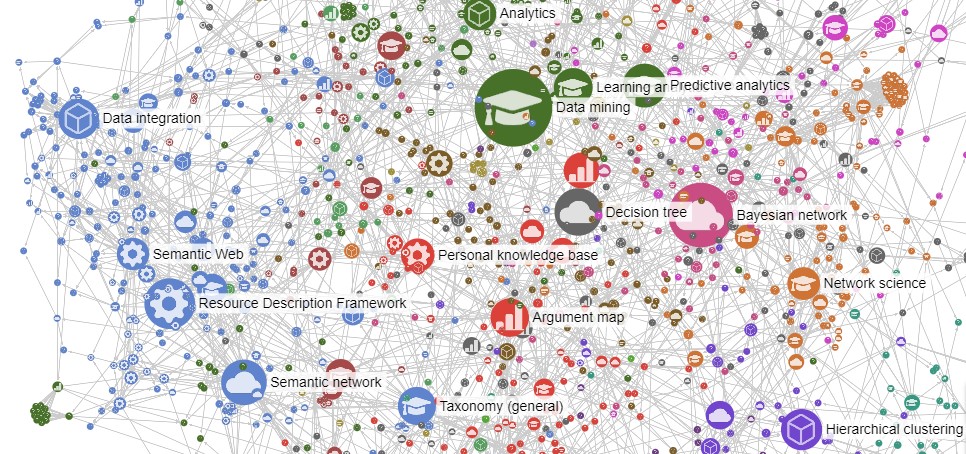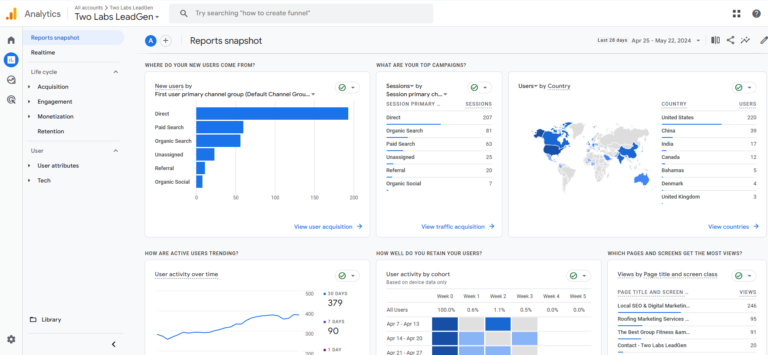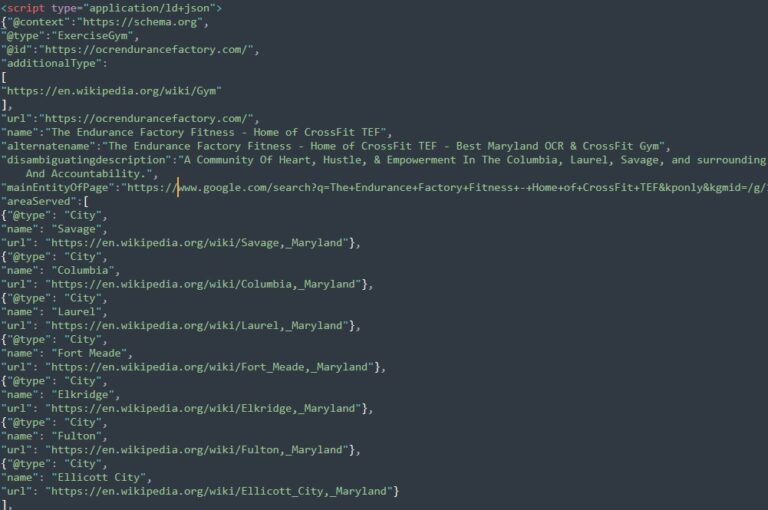Table of Contents
ToggleSemantic SEO represents a sophisticated approach to search engine optimization that prioritizes understanding and leveraging the relationship between words and phrases within the context of search queries. This technique hinges on the analysis of data to interpret user intent and the semantic connections within content. By focusing on entities, categories, and the conceptual links between them, Semantic SEO aims to align web content with the latent queries and needs of users.
This method is deeply rooted in linguistic theory, requiring a mastery of language structure and the ability to predict logical inferences that search engines make. For professionals seeking to excel in the digital landscape, Semantic SEO offers a framework for creating content that not only contains relevant keywords but also embodies the essence of the topics at hand, resulting in enhanced search engine visibility and user engagement.
Key Takeaways
- Semantic SEO focuses on understanding and leveraging the relationship between words and phrases in search queries.
- Search engines have evolved from basic keyword matching to systems that interpret user intent and contextual meaning.
- Linguistic principles, such as morphology and semantic triple syntax, help search engines comprehend and categorize content effectively.
- Context is critical in Semantic SEO for search engines to interpret the relevance of text accurately.
Understanding Semantic SEO
The concept of Semantic SEO encompasses the optimization of content by focusing on meaning and context to enhance search engine relevance and user experience. This strategy delves into the linguistic and pragmatic aspects of content, employing a sophisticated understanding of morphology and semantic triple syntax. By leveraging predicates of salient entities and named entities, Semantic SEO aims to align website information with the intricate algorithms used by search engines to parse and index data. This approach not only amplifies visibility but also ensures that the user encounters highly pertinent content. Mastery of Semantic SEO requires a comprehensive grasp of linguistic intricacies and the ability to meticulously construct content that resonates with both users and search engine technology, thereby driving organic engagement and fostering trust.
Evolution of Search Engines
The development of search technologies has been marked by a shift towards understanding the semantics underlying user searches, which has significantly enhanced the precision of search results. Search engines now leverage an array of linguistic and statistical methods to grasp the nuances of language, ensuring that the results align more closely with the searcher’s expectations.
| Era | Characteristics |
|---|---|
| Pre-Semantic | Keyword density; basic query matching |
| Transition | Introduction of machine learning algorithms |
| Early Semantic | Understanding synonyms; user intent |
| Advanced Semantic | Contextual meaning; entity recognition |
| Future Outlook | Predictive search; conversational interaction |
What are the Principles of Linguistics in SEO?
The principles of linguistics enable search engines to comprehend and categorize content more effectively, shaping the way content is optimized for better visibility and relevance.
- Morphology
- Understanding word formation and structure.
- Analyzing keyword variations and their semantic impact.
- Semantic Triple Syntax
- Identifying subject, predicate, and object within content.
- Enhancing content structure for clarity and machine understanding.

This analytical approach to SEO demands a nuanced grasp of language structure and meaning. By incorporating these linguistic elements, content creators can ensure that their material aligns with the sophisticated algorithms used by search engines, thereby improving their content’s performance in search results.
“Semantic SEO is the practice of optimizing content for meaning, not just keywords.”
1Backlinko, Nov 2023
Importance of Context in Content
Contextual signals contribute to a refined understanding of user intent, which in turn influences the visibility and ranking of content on search engine results pages (SERPs). The integration of context is not a mere adjunct to content creation but a cornerstone in enhancing the discernment of search algorithms.
| Contextual Element | Relevance to Semantic SEO |
|---|---|
| Linguistic Morphology | Enhances understanding of word structure and meaning |
| Semantic Triple Syntax | Enables precise content structuring for better comprehension |
| Industry Manufacturers | Provides specificity for industry-related queries |
| Manufacturer Morphology | Ties brand identity to semantic value in content |
Morphology’s Role in SEO
Morphology, a branch of linguistics focused on the structure of words, plays a pivotal role in enhancing the efficacy of Semantic SEO strategies.
- Understanding morphology within SEO involves:
- Analyzing keyword variations that reflect different morphological forms.
- Detecting and leveraging morphological patterns to optimize content visibility.
The strategic application of morphology in SEO allows for a comprehensive approach to keyword optimization, going beyond mere keyword density to encompass:
- Comprehensive morphological analysis, leading to:
- Improved match with user intent due to recognition of word variations.
- Enhanced content relevance through accurate morphological representation, resulting in better search engine rankings.
Semantic Triple Syntax Explained
Semantic triple syntax represents a linguistic construct that enhances the understanding of relationships between different entities within SEO content. It utilizes a structured form, consisting of a subject, predicate, and object, to map out the semantic architecture of information. This precise arrangement of data aligns with the principles of semantics and linguistics, focusing on the syntactical connections that bind entities in a meaningful and searchable pattern for SEO.
| Subject | Predicate | Object |
|---|---|---|
| SEO Strategy | Incorporates | Semantics |
| Content | Engages | Audience |
| Keywords | Attract | Traffic |
| Data | Drives | Insight |
| Optimization | Achieves | Rankings |
Industry Manufacturers’ Impact on SEO
Industry manufacturers play a pivotal role in shaping SEO strategies through the integration of specific terminology and product-related keywords. Their influence is marked by the strategic use of linguistic elements, which harmonize with the core principles of semantic SEO to enhance discoverability and relevance.
- Manufacturers impact SEO through:
- Terminology Integration:
- Use of industry-specific jargon and lexicon.
- Alignment with semantic triple syntax for precision.
- Keyword Optimization:
- Incorporation of product-related keywords.
- Adjustment based on search data analytics.
- Terminology Integration:
This methodical approach ensures that content is not only tailored to reflect the unique measures and standards of an industry but also optimized to meet the informational needs of a targeted audience, thus driving organic traffic and fostering engagement.
Predicates and Salient Entities
Predicates serve as connectors, linking salient entities within a semantic triple syntax, which is pivotal for search algorithms to comprehend and catalog content. This process relies heavily on linguistic precision and a thorough understanding of industry-specific measures and manufacturers. By identifying and employing relevant predicates, SEO professionals can effectively map the relationships between entities, such as manufacturers and their products, within a given semantic field. This enables a search engine to recognize and prioritize the most pertinent information, thereby optimizing the visibility of web content for targeted queries. The meticulous application of predicates ensures that the semantic structure of the content is both comprehensible and valuable to advanced search algorithms.
Named Entities in Search Optimization
Named entities, crucial for semantic SEO and defined in Google’s patent, are leveraged to improve search visibility and relevance.
- Semantic Triple Syntax:
- Enhances content structure
- Promotes logical data interconnections
- Industry Manufacturers:
- Increases brand authority
- Boosts product discoverability
Analyzing linguistic data, SEO experts extract manufacturer names and product identifiers, embedding them into a web of semantically relevant content. This precision targets user intent, aligns with search algorithms, and elevates industry-specific visibility. The goal is to construct a robust, information-rich digital presence, where search engines can effortlessly parse and present the most pertinent results to users, thereby driving engagement and conversions.

Measuring SEO Success
Mastery of the metrics of visibility and user engagement involves a deep dive into data analytics, where visibility may be quantified through search engine rankings, organic traffic flow, and indexation rates. Engagement metrics are similarly scrutinized, with a focus on click-through rates, dwell time, and conversion rates reflective of user interaction and content relevance. The analytical approach demands a rigorous examination of user behavior patterns and search engine performance data. This data-driven methodology ensures that SEO strategies align with the evolving algorithms of search technology, thereby optimizing the digital footprint of brands within the linguistic landscape of the web.
Frequently Asked Questions
How Does Semantic SEO Influence Voice Search Optimization and User Queries?
Semantic SEO enhances voice search optimization by aligning content with user intent, thereby improving the match between user queries and relevant, authoritative information, leading to more accurate and user-centric search results.
Can Semantic SEO Strategies Improve the Accessibility of Content for Differently-Abled Users?
Semantic strategies enhance content accessibility for differently-abled individuals by structuring data to support assistive technologies, thus making information retrieval more intuitive and effective for diverse user needs.
What Is the Relationship Between Semantic SEO and a Website’s Bounce Rate or User Engagement?
Semantic SEO strategies enhance content relevance, improving user experience and engagement, which can significantly reduce bounce rates and foster sustained interaction with a website’s offerings.
How Do Updates in Search Engine Algorithms Affect Established Semantic SEO Tactics?
Search engine algorithm updates necessitate adaptive strategies to maintain relevance. Established tactics must evolve in response to new data-driven metrics, ensuring optimal user engagement and sustained search result performance.
In What Ways Does a Multilingual Website Need to Adapt Its Semantic SEO Approach?
A multilingual website must tailor content to linguistic nuances, incorporating morphology and syntax variations to optimize for search engines across different languages while maintaining coherence and a positive user experience.
Conclusion
In conclusion, Semantic SEO represents an evolutionary step in search engine optimization, necessitating an intricate understanding of linguistic nuances and user intent. It fundamentally alters content strategies to align with the semantic core of queries, enhancing relevance and visibility. The integration of morphology, context, and named entities supports this alignment, contributing to a measurable impact on SEO success. Entities that adeptly adopt these techniques may achieve a robust online presence and superior user engagement.
- Dean, B. (2023). Semantic SEO. Backlinko. https://backlinko.com/hub/seo/semantic-seo ↩︎












